Service History
The tug
Arctic was built at the Rand & Burger Shipyard in Manitowoc, Wisconsin. The Goodrich Transportation company commissioned the ice-breaking tug
Arctic to aid stranded and distressed vessels and keep navigation channels open, enabling cross-lake trade through the winter months. The tug was therefore built with heavy frames, set close together and sheathing the hull in iron from stern to stern. The
Arctic also contained a high pressure, non-condensing engine and one steel boiler. During its first season in 1882, the
Arctic was under the command of Captain Perry H. Edwards and was stationed as a harbor tug in Manitowoc. Here, it assisted in the rescue of multiple Goodrich vessels. The
Arctic was transferred to Milwaukee by December to keep transportation channels clear of ice for Goodrich steamers. The heavy build of the
Arctic allowed for success for the Goodrich line's winter season; the
Chicago Daily Tribune and
Detroit Free Press commended the tug's "valiant service in keeping the Grand Haven & Milwaukee route across Lake Michigan open this winter."
The
Arctic continued, season-in and season-out, to aid distressed vessels and clear ice. In 1895, the
Arctic underwent two changes in command: Captain Munger in July, and Captain Louis Sinclair succeeded him in November. Captain Chauncey R. Thayer took command in 1896 and remained at the helm until the early 1900s. The
Manitowoc Pilot reported that the tug
Arctic "is kept quite busy at these times," throughout the 1895 to 1897 seasons; the tug assisted five schooners, five steamers, and a dredge during these years.
In the late summer of 1898, the
Arctic was taken to the Burger & Burger shipyard for hull extension and complete overhaul. The gross tonnage of the vessel was increased from 52 to 71 tons. The
Manitowoc Pilot described the tug as having "a roll like the hip and shoulder movement of a thumper when he is about to wade into an opponent. It is communicated by means of the helm and greatly aid in ice crushing." The
Arctic's new hull was put to use in December of 1899, when the steamer
Rand was stranded ashore on the reefs at Jacksonport. Other tugs attempted and failed to free the steamer from ice. The
Arctic managed to release the
Rand within minutes with no damage.
The tug went into dry dock between January and March of 1914 for a general overhaul and rebuild. After it received repairs, the
Arctic also received a new captain: Captain Edward Stoke. Three years after taking command, in June 1917, Captain Stoke passed away due to post-surgical complications. Captain William Clark took up the helm shortly afterward and would remain captain of the
Arctic until its abandonment.
In November of 1920, a massive lake-wide volunteer search was conducted for a missing Great Lakes Naval Station seaplane. The search party included the tugs
Arctic and
Reiss, the Two Rivers Coast Guard crew, airplanes from the Great Lakes Naval Station, and the head of aviation from Culver Military Academy. The search party covered the entirety of central Lake Michigan; however, the hull and passengers were never recovered. From 1923 to 1926, newspaper entries portray the
Arctic's service as a railroad car ferry keeper.
Final Voyage
As the
Arctic aged, it required repair and overhaul more frequently. The Goodrich Transportation Company ultimately determined that it had reached a threshold where it would cost more to rebuild the tug than to acquire a new vessel. The
Arctic was dismantled and beached north of Manitowoc harbor. On January 17, 1930, the tug’s enrollment documents were surrendered. They declared the
Arctic beached and abandoned.
The
Arctic spent forty-nine years in-service, aiding vessels in Manitowoc, Chicago, and Muskegon and clearing ice during the winter months across Lake Michigan. A 1930 issue of the
Manitowoc Herald-Times paid homage to the tug in an article, saying, “to recount the items of service this craft has rendered throughout its life, would fill volumes-- its responses to the four blasts of vessels on the lake in need of help; its assistance to grounded boats; its welcome stream of water on dock property being destroyed by flames; its charges into ice jams that threatened destruction of boats and bridges; and breaking of ice that enabled navigation to continue—all are legion in number, and no man can recount them all."
Today
Located 1.5 miles northeast of the Manitowoc Breakwater Light, in Manitowoc, Wisconsin, the tug
Arctic lies in 10 to 15 feet of water in Lake Michigan. It is partially covered by sand. The vessel lies in two large pieces approximately 800 feet apart. The stempost and much of the vessel's upper hull structure remain intact in the northern section of the wreckage; the southern section contains the rudder, bilge structure, and boiler. The stempost rises seven feet out of the sand; both the port and starboard sides of the upper hull of the bow are exposed. An indicator of the ice-breaking capacity of this ship, multiple wooden and iron-hogging trusses, are extant on the bow portion of the wreckage. The bilge portion of the tug lies approximately 100 yards north of the
Francis Hinton wreck in fourteen feet of water.
Wisconsin Historical Society archaeologists initially investigated the site's bilge section in 1994, but a complete survey was never completed. The bow was surveyed, as well as a resurvey of the bilge section, during the summer of 2017.
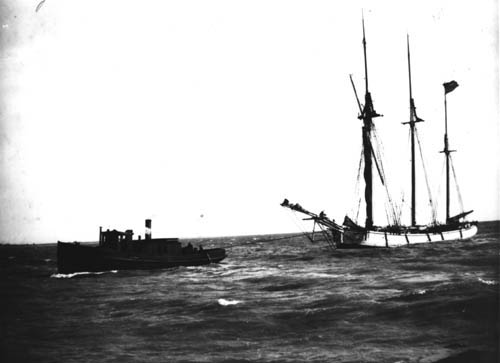
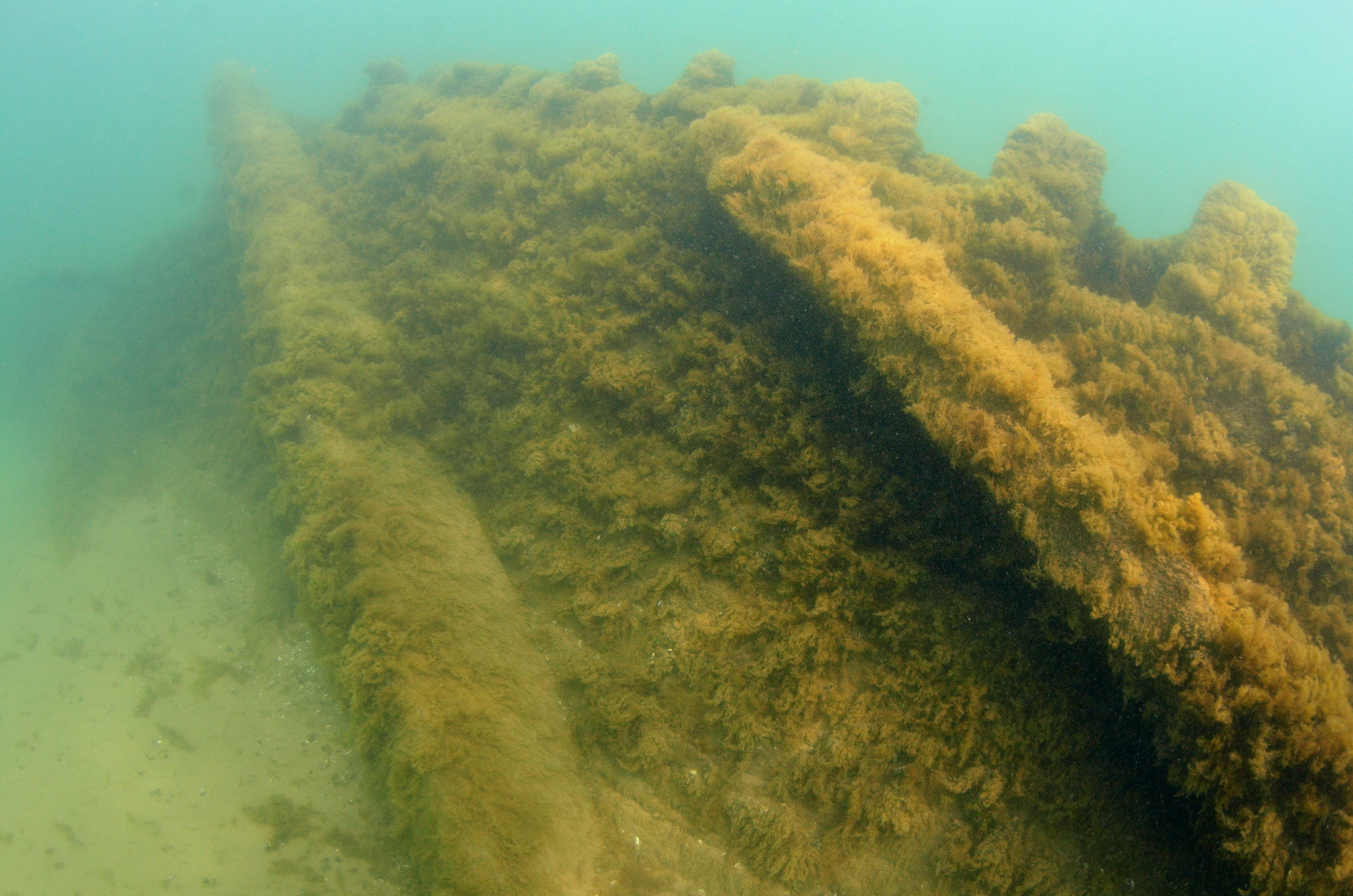
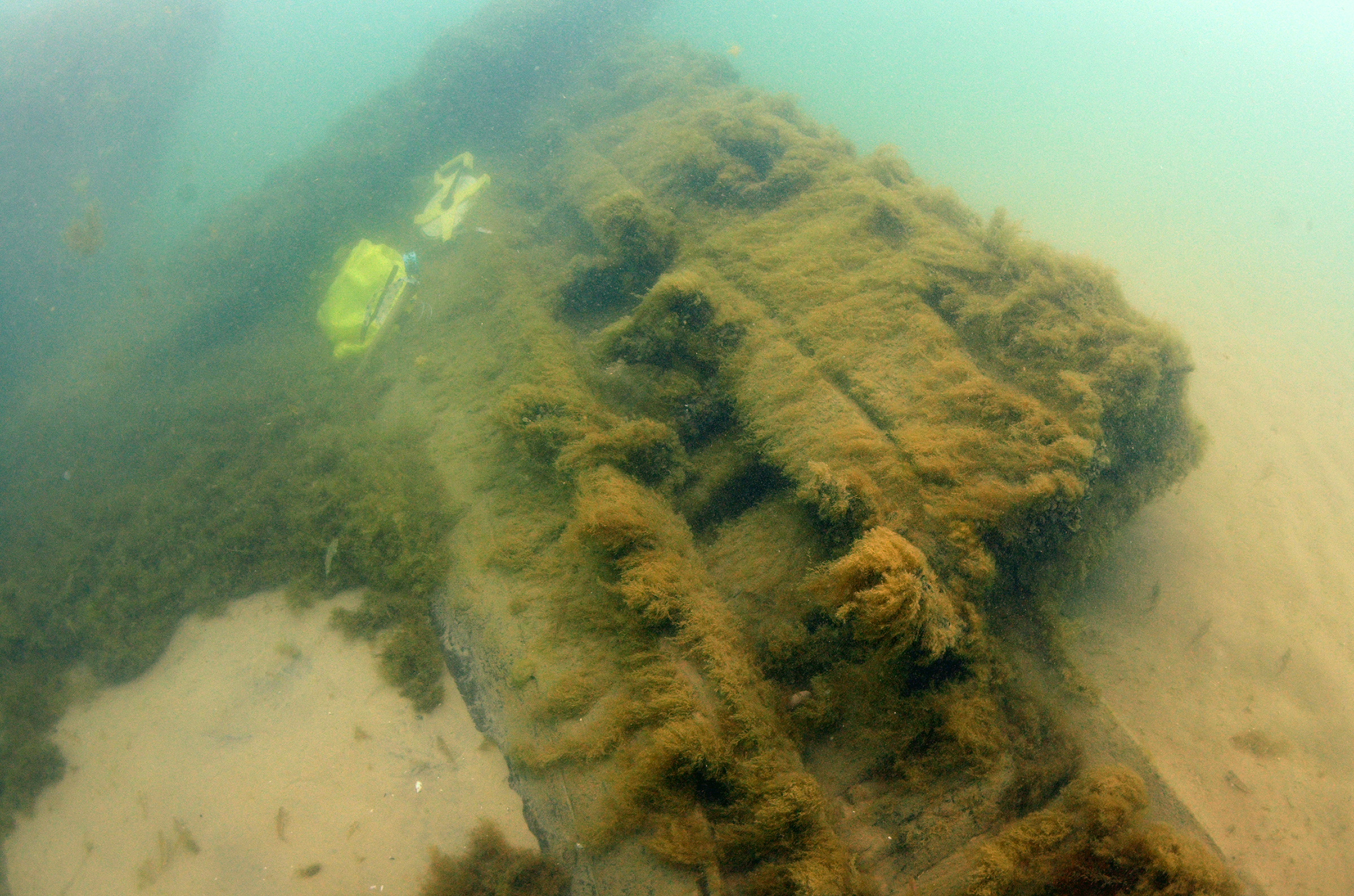
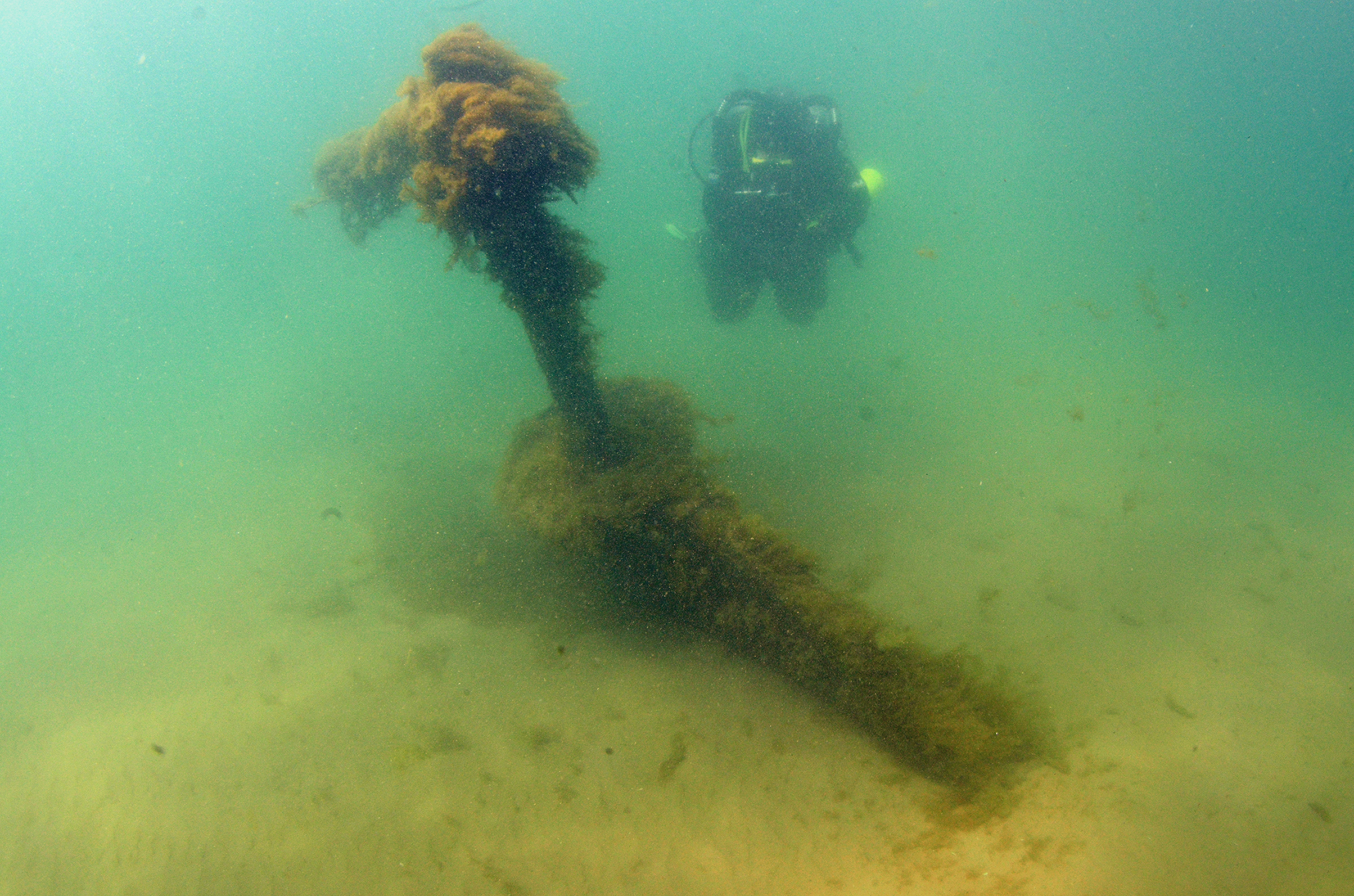
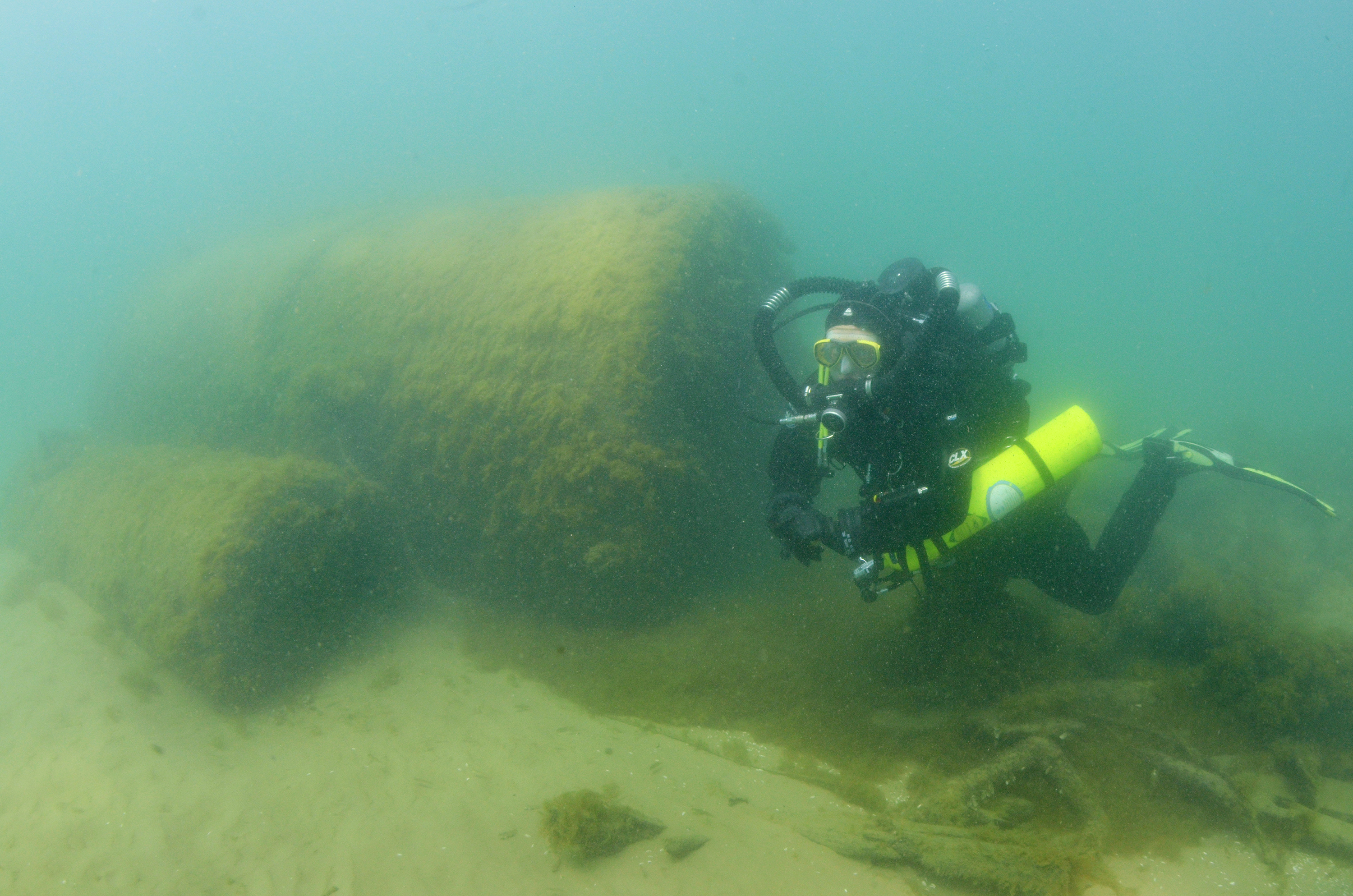
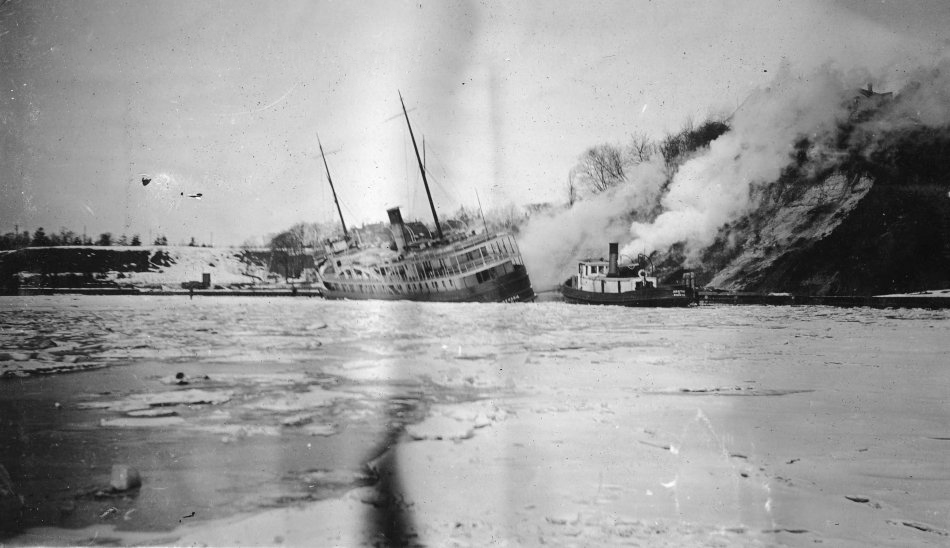
_0001.jpg)
_0002.jpg)
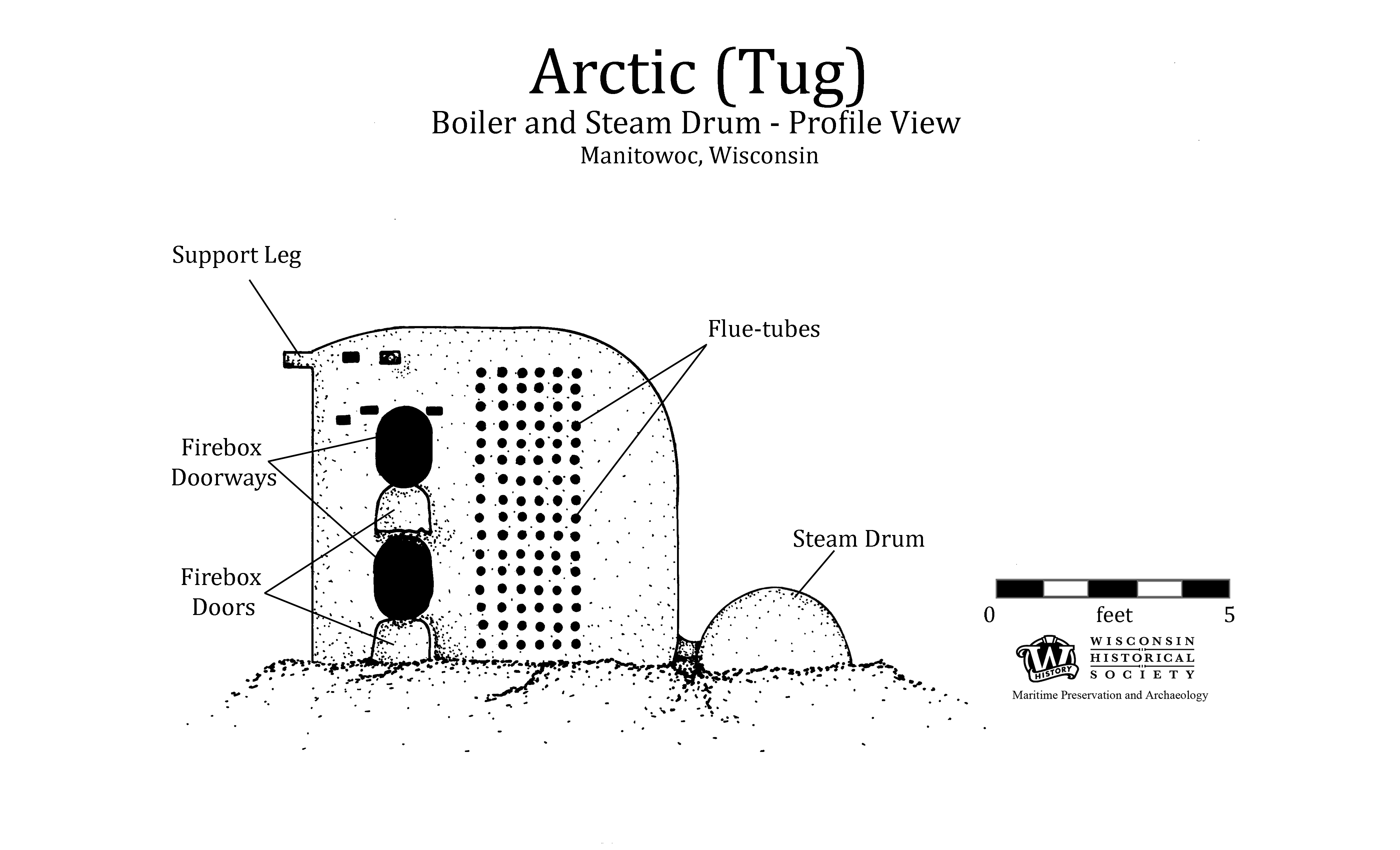
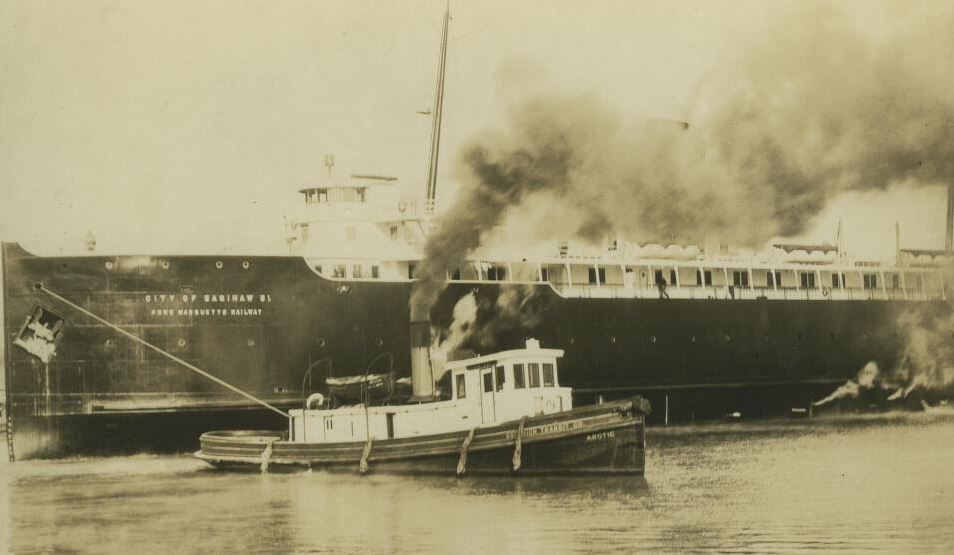
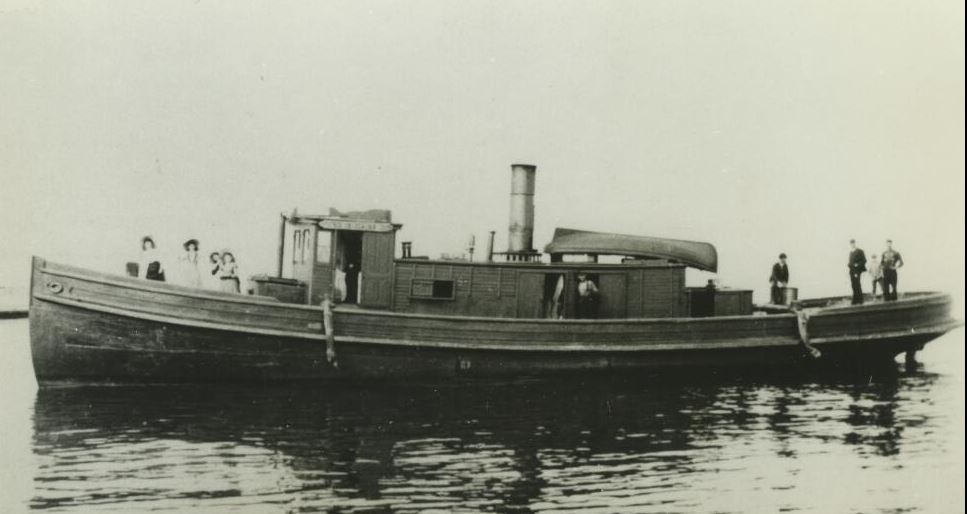

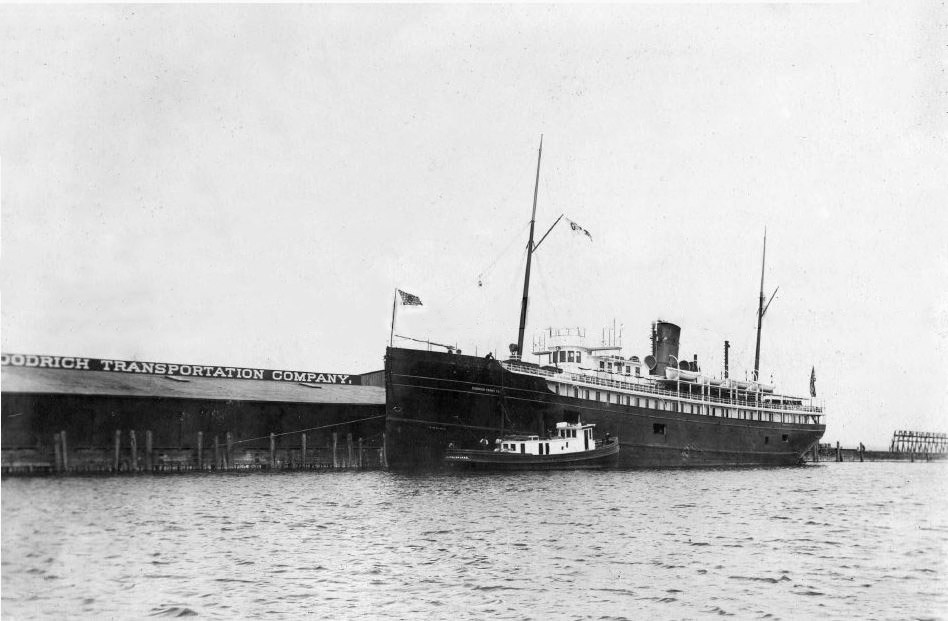
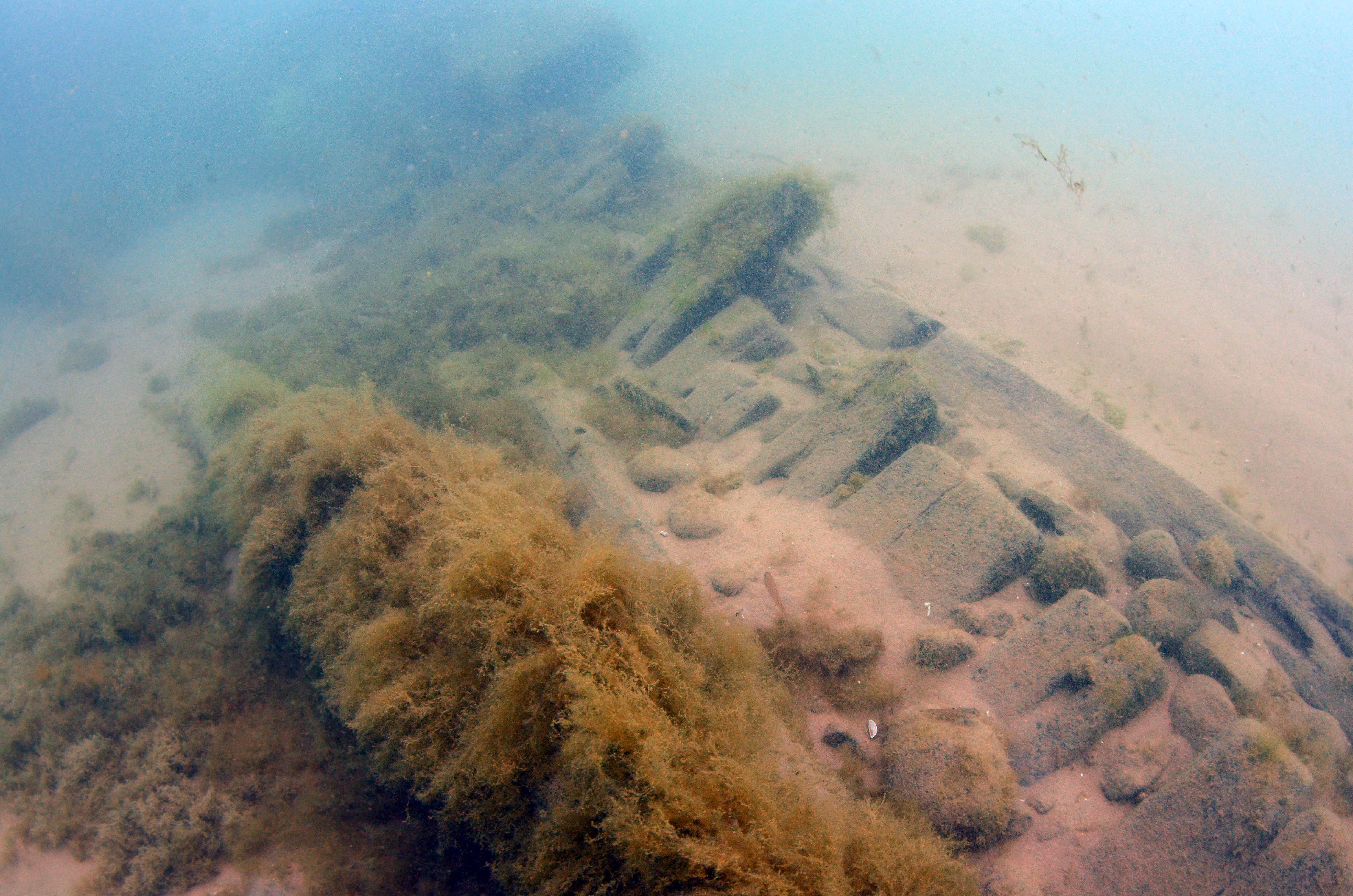
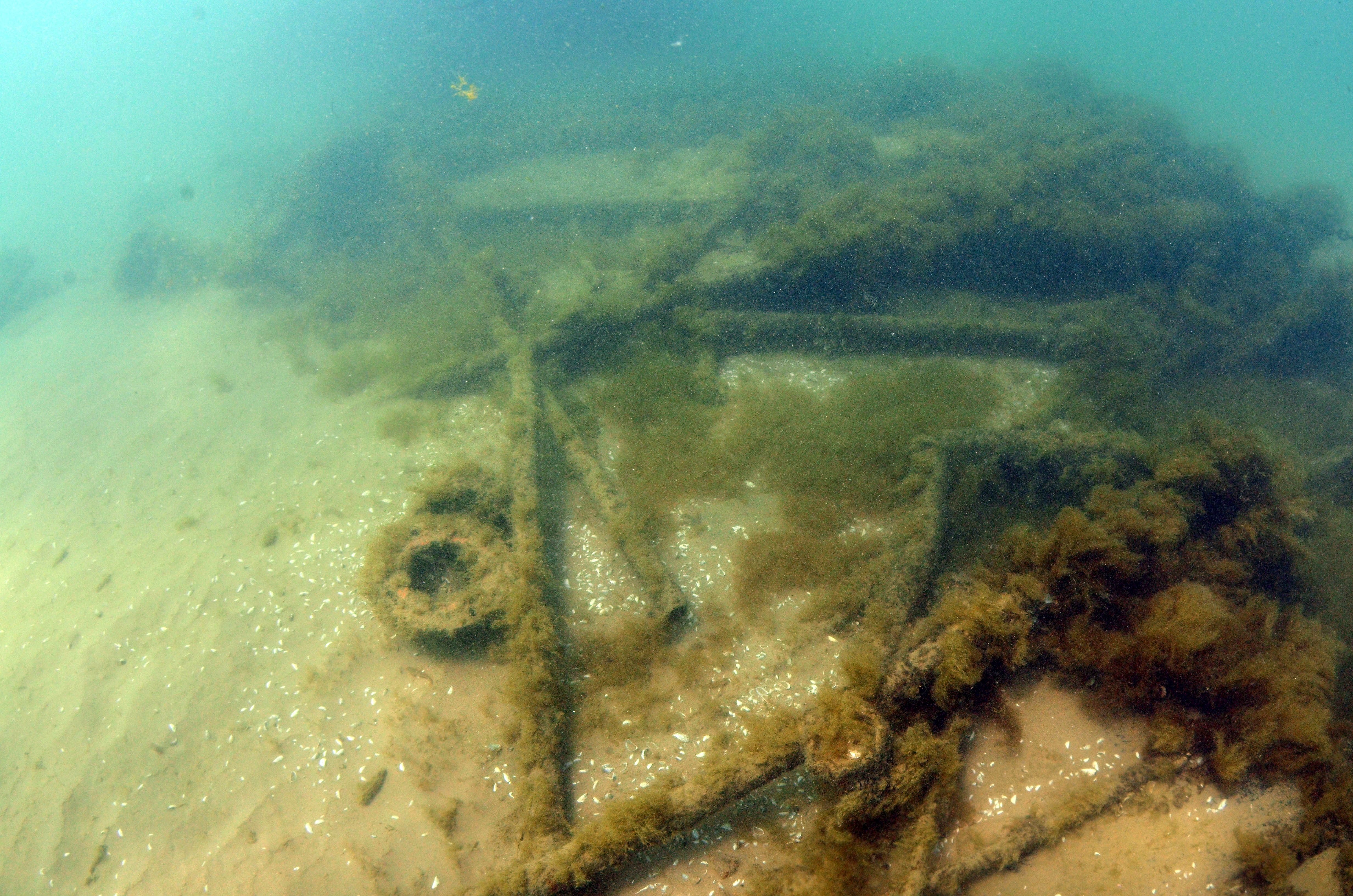
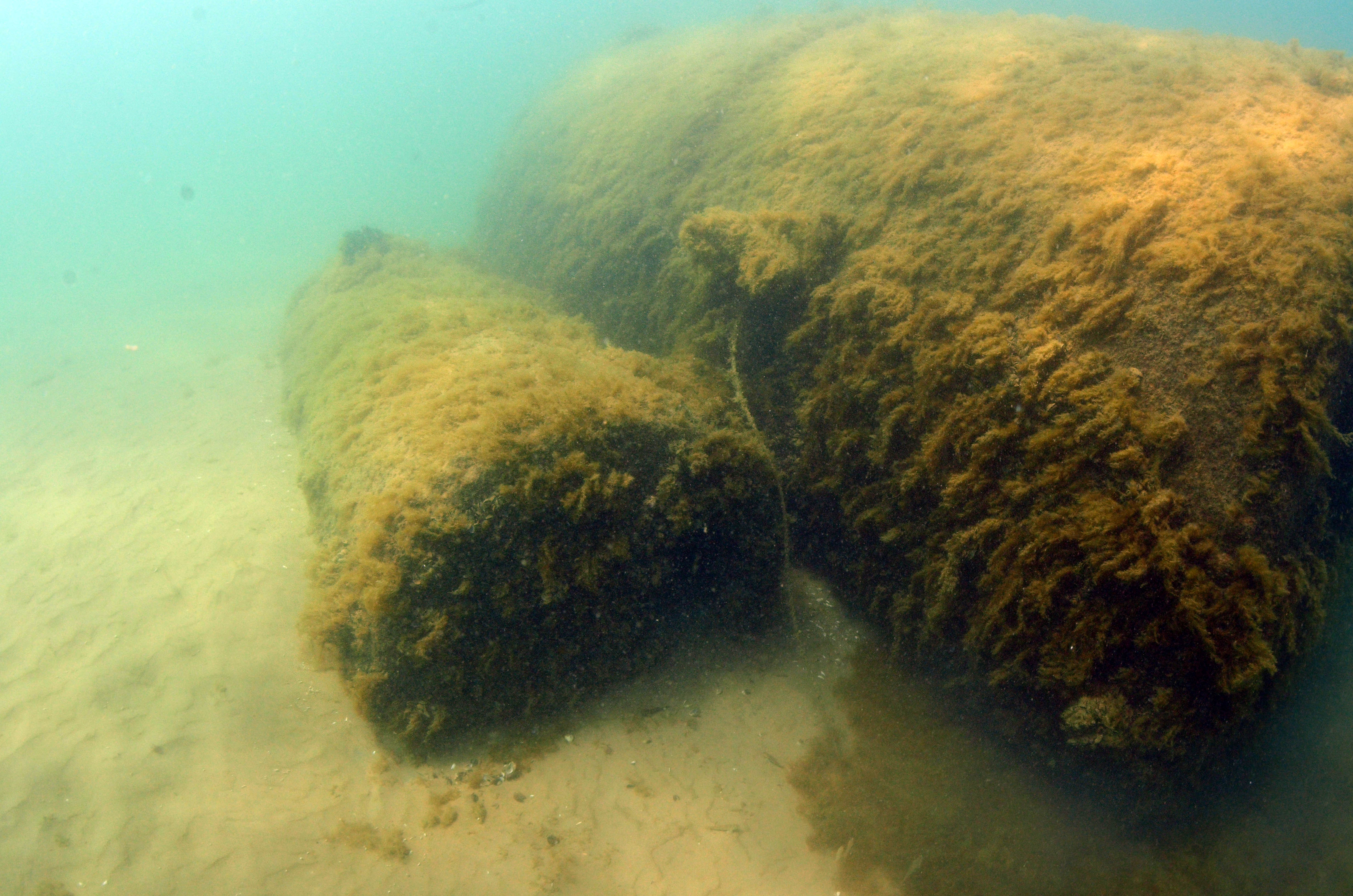
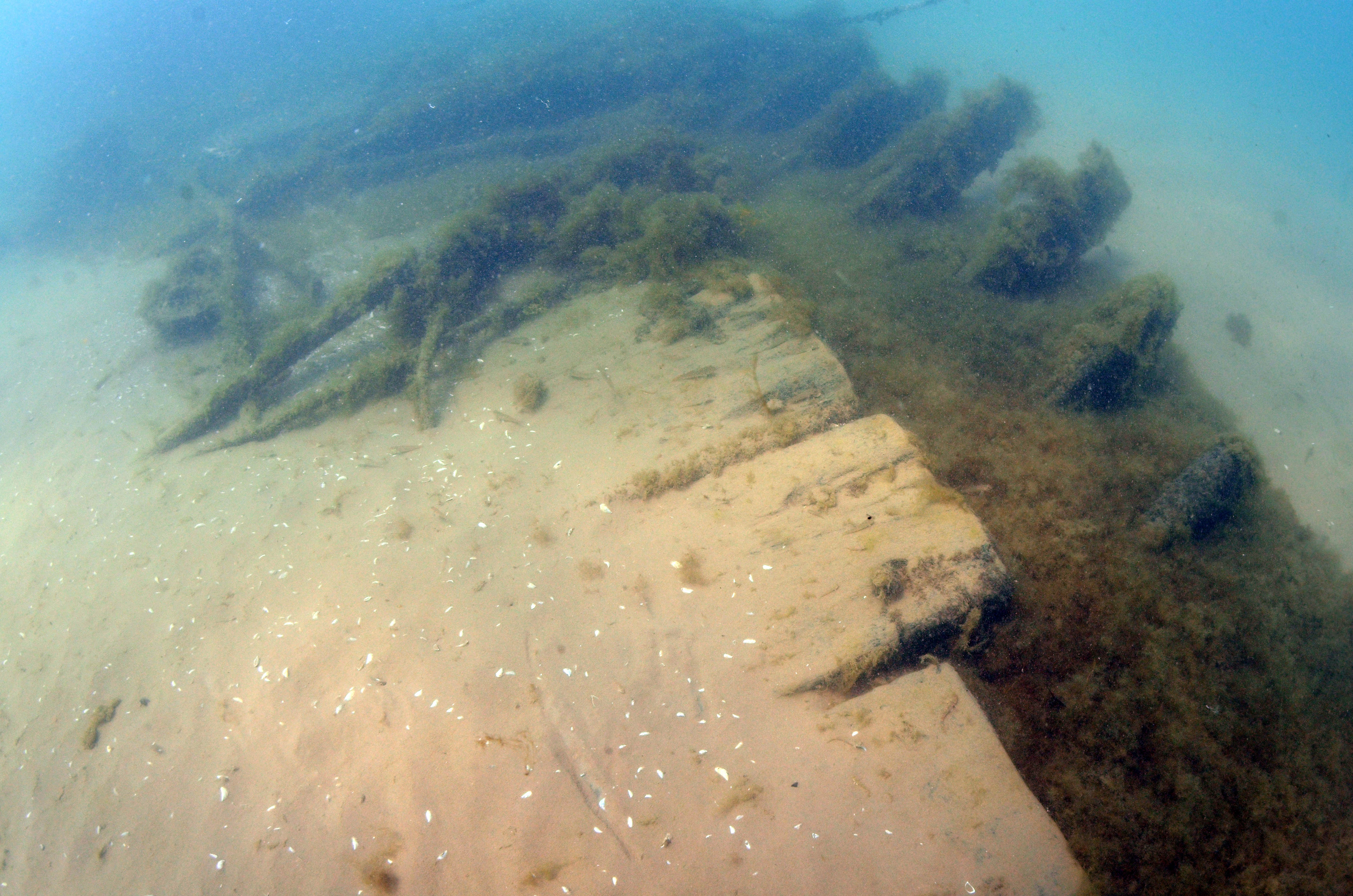
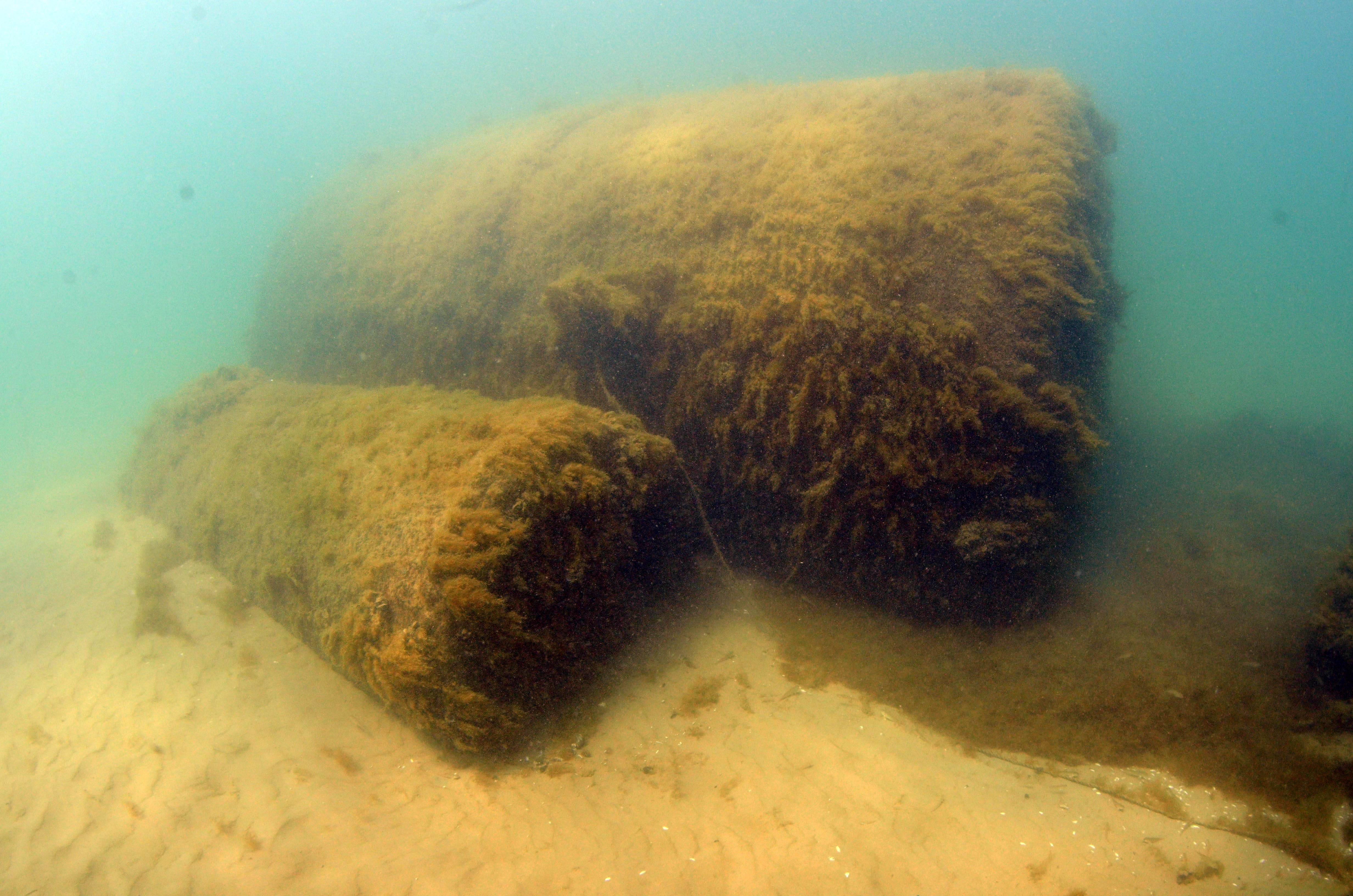

 Confirmed Location
Confirmed Location
 Unconfirmed location
Unconfirmed location